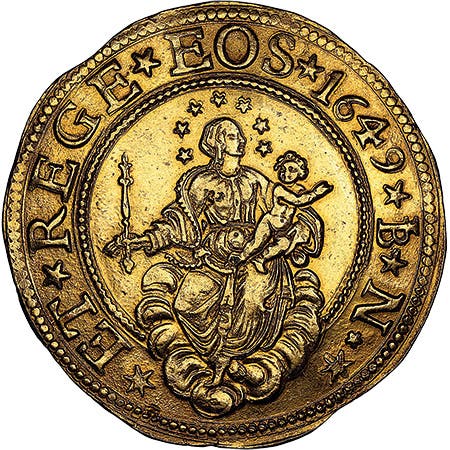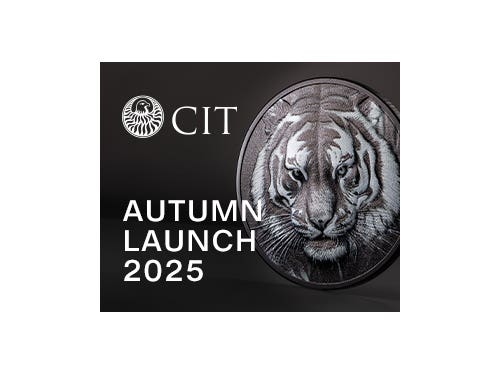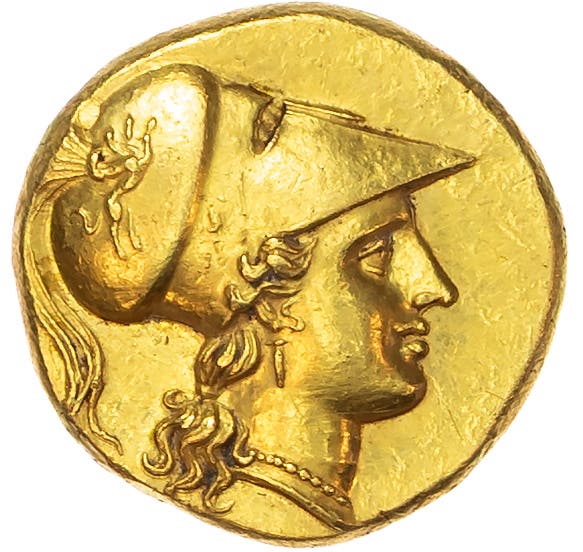Solidus from Islamic conquest of Spain tops Spink sale
Spink’s catalog for the firm’s early December sale may have been packed with rare and desirable British silver, but it was a Spanish Umayyad solidus that topped the bill. It…
Spink’s catalog for the firm’s early December sale may have been packed with rare and desirable British silver, but it was a Spanish Umayyad solidus that topped the bill. It was followed a little way back by a surviving half shekel from the First Jewish War.
The 4.11 g base gold solidus is a highly significant piece. It is the first known Islamic coin in Andalusian history and, as such, is important in both Spanish and Islamic numismatics. Apart from the Spink catalog record, it is both unpublished and unrecorded.
The obverse carries an abbreviated Latin legend about a seven-pointed star. The reverse bears the legend that gives the date in Roman numerals, XCII. That date, AH 92, is the earliest known Hijra year date for any Spanish Umayyad coin. It is the first year of Muslim influence in Spain and corresponds to 711 C.E. Across the field is the Byzantine indiction date INDCIX, making the coin the earliest known for the Spanish Umayyad solidus series.
The desirability of the piece was enhanced by it being well struck and in aEF condition, all of which explains its $33,768 [£25,200] price on a £8,000-£10,000 estimate.
The Judean silver half shekel was struck in Year 3 [68-69 C.E.] of the First Jewish War, a.k.a. The Great Revolt (Hendin 1362). Given it was an attractive, reasonably well-centered coin and graded aEF, it was bid-up to $14,472 [£10,800] or almost four times upper estimate.
The British silver included Part 2 of the Tisbury Collection of Commonwealth Silver. The importance of this material was shown by the numerous rarities on offer. Typical was a halfcrown of 1655 (KM-391.1; S-3215). Only three specimens are known of this date, two of which are in the British Museum. Consequently, despite being described with a “scratch across obverse shield, otherwise fine or better,” it raced away to take $6,110 [£4,560] on a £2,000-£3,000 estimate.
Other high-rollers included:
• choice George V proof 5 pounds of 1911 (KM-822; S-3994) as struck: $13,668;
• extremely rare Charles II shilling of 1666 (KM-427.1; S-3375) in VF+: $10,452;
• Diva Faustina aureus post-147 (RIC 357a; BMC 403) in EF: $9,648;
• Henry V noble (S-1740) in lightly creased gVF: $8,040;
• Commonwealth halfcrown of 1660 (KM-391.2; S-3216) in gF+: $6,110;
• extremely rare Charles II halfcrown of 1667 (KM-428.4; S-3365) in aF: $5,628.
The total realized on the 696 lots was $440,860 [£329,000]. Full catalog details and prices realized are available from www.spink.com. A premium of 20 percent is included in all prices shown. These have been converted at a rate of 1.00GBP = 1.34USD.
This article was originally printed in World Coin News. >> Subscribe today.
More Collecting Resources
• The Standard Catalog of World Coins, 1601-1700 is your guide to images, prices and information on coins from so long ago.
• Any coin collector can tell you that a close look is necessary for accurate grading. Check out this USB microscope today!









